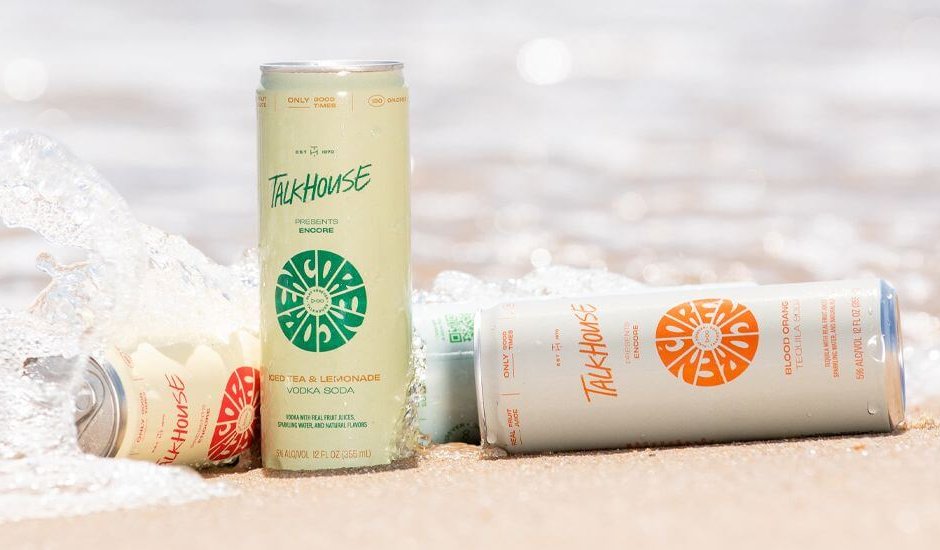Hamptons Wine Cellars: Aged to Perfection

It all begins with one bottle of wine. The soft pop of a cork followed by a vibrant pour of claret-colored lushness into a vessel that, when raised to the lips, releases a menagerie of scents and tastes, overwhelming the senses. Perhaps that first sip of a new find or a familiar favorite begets the purchase of a case or two. Suddenly there’s a collection that needs to be properly kept, lest the delicate, fickle liquid lose its dramatic flair or subtle aroma. It’s a true battle of the elements—hot vs. cold, arid vs. humid—that will determine the fate of each drop. For wine collectors and oenophiles, especially here on the East End, a wine cellar is the ideal addition to any home.

HISTORICAL ONEOLOGY
The first and most important factor for any wine cellar, or wine storage unit for that matter, is creating the ideal conditions. Over 3,000 years ago, winemakers in the near east and throughout the region that would become Europe stored wine in palace cellars and in cool, dark caves far from marauders and wild animals, out of the ravages of weather. The oldest known wine cellar on record is the Canaanite palace in Tel Kabri, Israel, located in the western Galilee region, uncovered by a team led by Dr. Eric H. Cline of George Washington University in 2013. At this Middle Bronze Age (1900 to 1600 B.C.) site, archeologists uncovered 40 large storage jars in a “wine cellar” which they estimate would have held upwards of 2,000 liters, “or the equivalent of 3,000 modern bottles of wine.”
Cline explains that researchers used organic residue analysis to learn more about the wine. “We don’t know where our wine was being made, but it looks like most of the wine…was red; a few jars might have held white,” he says. While Cline asserts that winemakers have used this storage method for at least 3,000 years, “Bear in mind that I doubt this wine would have aged all that well; we suspect it was meant to be consumed almost right away.”
With the advent of modern technology, we’re far from cave dwellers and the only marauders in sight might be the influx of friends for the opening of a special or rare vintage like the Balthazar (12-liter) of Chateau Margaux 2009, a red that sold for $195,000 in Dubai.
“If you dig down 3 to 4 feet in the ground you get the perfect conditions for storing wine,” says Peter Cimino of North Fork Wine Cellar Designs, who explains that while the design is “anything the customer wants,” the ideal temperature is “55 to 57 degrees” and “between 68% and 70% humidity.” Further, he says, “If you think long-term storage you need proper refrigeration and humidity so you can store it for 30 years or more.”
Bud Handel of East End Wine Cellars concurs. “The only rule is to create an environmentally controlled space. High ceilings and big doors don’t lend themselves to efficiency. I keep the doors as small as possible,” he says. Handel has worked with many architects over the years and advises his clients on the best design of a wine cellar, “If you build wine racks over 7 feet tall you need a ladder or stool to reach bottles. It’s not smart or safe to carry bottles of wine down a ladder.”

GROWING COLLECTIONS
While the Canaanite wine cellar was serviceable and the height of opulence in its day, modern materials and technology provide today’s oenophiles every opportunity to stretch their imagination with the only limits being budget
and space.
“I’m building the second wine cellars for some of my first customers now. They expanded their collections, built bigger homes, and have done renovations,” Handel says, noting that people with tight spaces can also enjoy a wine cellar. “We can take a decent-size clothes closet and add a cooling system, a wood door with glass, and lights to add sparkle for very little cost. I did one with 400 bottles like that for about $18,000.”
“Once you have a wine cellar you end up buying more wine,” says Cimino, who encourages clients to consider the size of their current collection only as a starting point and to build as large as possible. A basic wine cellar, he says, can hold 800–1,200 bottles and has a price tag of about $40,000. But he’s also built wine cellars that can hold upwards of 8,500 bottles of wine for about $250,000. Given the size of the mega-mansions and estates in the Hamptons, it’s not hard to imagine a wine cellar with over 8,000 bottles of red, white, rosé and bubbly.
Two main factors that determine the cost are the materials and the cooling system. “When it comes to materials you want hardwoods,” Cimino explains. “You don’t want cedar because for long-term storage you can impart the scent of the wood in the cork, which can ruin the wine. All-heart redwood is the exception. It’s a soft wood but it’s good. Other good materials are maple, walnut and rosewood.”
“The size of the space determines the cooling unit,” Handel says. “You can have a through-the-wall unit, like a room air conditioner, which is a lot less expensive.” Other options include a ducted system and a split-ducted system. Regardless of the cooling system, which is typically tucked behind the walls and ceilings, a steady temperature of about 55° is ideal.
Fluctuations in temperature and humidity can alter the yeast, which can ruin the wines. Cimino says, “With the yeast you put in wine, if it’s too cold the yeast can’t work. If it’s too warm, the yeast goes wild and the wine goes bad.”

A MATTER OF TASTE(ING)
Most people can imagine a wine cellar being a room with row after row of bottles lined up neatly on wooden shelves. When nearly any material can be used, the trends run the gamut Handel says. “Everybody’s taste is different. For an ‘Old World’ look we use stone and brick for arches and pillars combined with oak and mahogany. Design is so eclectic with glass and stainless racks to stone and wood. Some people like a highly finished and polished wood, like furniture. That gets expensive.”
“A more contemporary look is popular now with wine cellar design,” says Cimino, who also adds cigar humidors in many projects to take advantage of the perfect humidity conditions. “Lighter color wood and metal racking and a display so you can see the labels instead of the ends of the bottles are also popular.”
To showcase their collections, Cimino says enthusiasts are creating wine tasting rooms and antechambers in addition to wine cellars. “Traditionally, these tasting rooms for collectors and winemakers are the best places to enjoy wine. Now we build adjoining rooms with tables and racking for storage and for special finished bottles. We put in windows so you can see the actual cellars.”
With technology available to scan barcodes and a multitude of apps that send alerts when a special bottle is ripe for tasting, this ancient art has gone high-tech. Handel says that in his wine cellars he installs a series of bin markers to “keep track of special wines and inventory.” These markers are tied to integrated computer systems that, along with tracking inventory, keep wine notes handy.
If you’re short on space and prefer a low-tech option, our experts suggest the EuroCave that holds about 200 bottles, as well as units from Sub-Zero, Viking and U-Line all made to match stainless kitchen appliances that hold anywhere from 24–100 bottles.
At the end of the day, to mark a milestone, or to round out a delicious meal, a glass of wine has been the choice across the globe for a few millennia as archeologists in Israel have proven. We wonder, what these explorers will discover tomorrow in some other far-off corner of the globe. Perhaps a perfectly preserved vintage that has finally matured to perfection. That collection will need a good home, and when it comes to wine storage for any size collection. “It can be basic storage or it could be elaborate,” Cimino says. “My best advice is not to build a wine cellar for the collection you have right now. As soon as you have a wine cellar you’ll buy more.”










